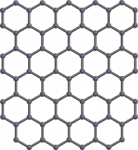Graphene could deliver internet one hundred times faster
 The use of graphene in telecommunications could dramatically accelerate internet speeds by up to a hundred times, according to new research by scientists in Bath University’s Department of Physics.
The use of graphene in telecommunications could dramatically accelerate internet speeds by up to a hundred times, according to new research by scientists in Bath University’s Department of Physics.
In a paper published in Physical Review Letters, researchers from the Centre for Graphene Science at the Universities of Bath and Exeter have demonstrated for the first time incredibly short optical response rates using graphene, which could pave the way for a telecommunications revolution.
Every day large amounts of information are transmitted and processed through optoelectronic devices such as optical fibres, photodetectors and lasers. Signals are sent by photons at infrared wavelengths and processed using optical switches, which convert signals into a series of light pulses.
Ordinarily optical switches respond at rate of a few picoseconds – around a trillionth of a second. Through this study physicists, have observed the response rate of an optical switch using ‘few-layer graphene’ to be around one hundred femtoseconds – nearly a hundred times quicker than current materials.
Graphene is just one atom thick, but remarkably strong. Scientists have suggested that it would take an elephant balanced on a pencil to break through a single sheet. Already dubbed a miracle material due to its strength, lightness, flexibility, conductivity and low cost, it could now enter the market to improve telecommunications dramatically.
Commenting on the report’s main findings, lead researcher Dr Enrico Da Como said: “We’ve seen an ultra-fast optical response rate, using ‘few-layer graphene’, which has exciting applications for the development of high speed optoelectronic components based on graphene. This fast response is in the infrared part of the electromagnetic spectrum, where many applications in telecommunications, security and also medicine are currently developing and affecting our society.”
